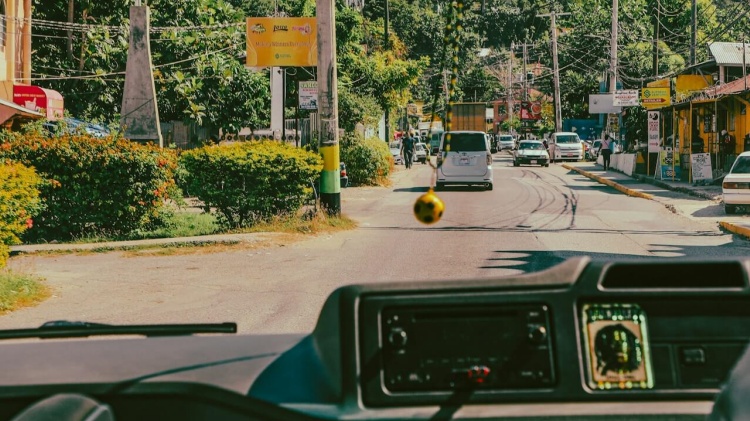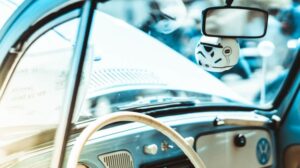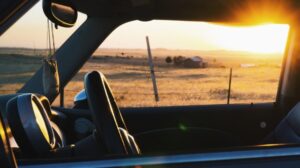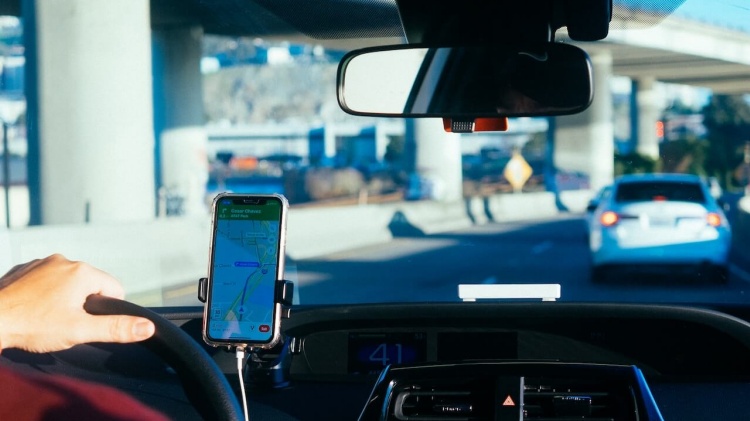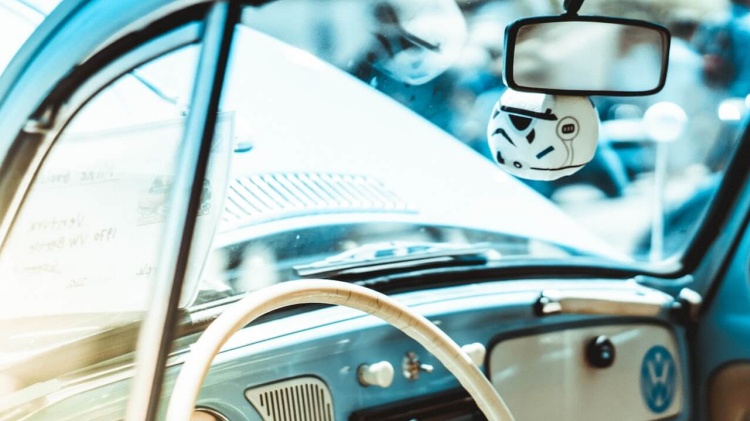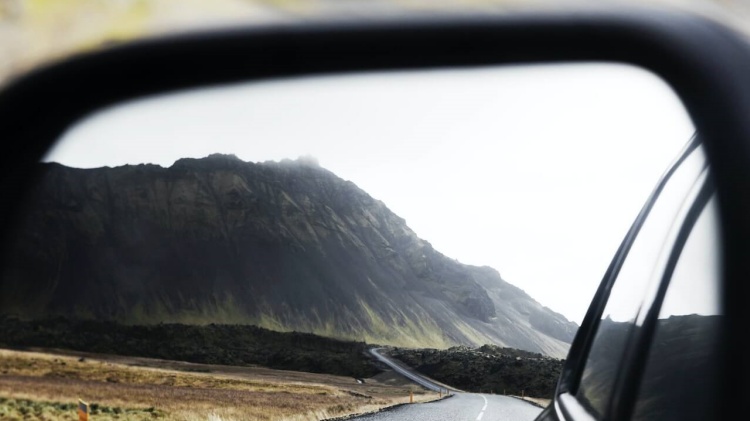Installing a car seat mirror allows parents and caregivers to view children in the backseat while keeping their eyes focused safely on the road ahead. With a wide variety of mirrors available featuring different shapes, sizes, and materials, selecting the optimal product for your needs deserves careful consideration.
Follow this comprehensive guide that examines the pros, cons, features, and installation methods associated with the most popular car seat mirror options before determining the best choice for your family. Discover how to achieve the clearest reflection for safe and confident driving with a baby on board.
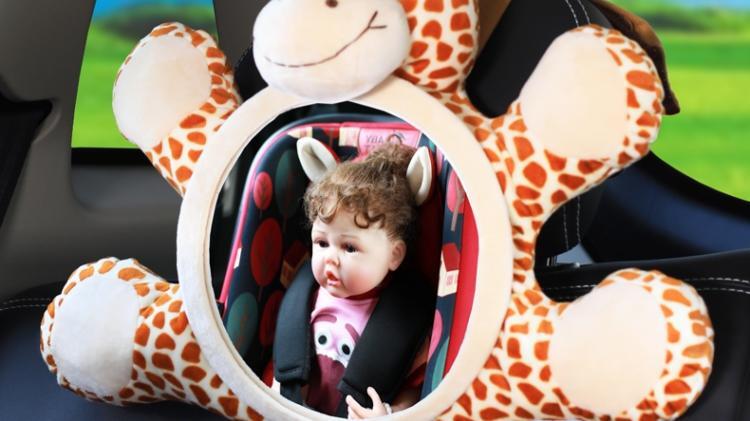
While vehicle seat positioning often obscures a clear backward view, car seat mirrors provide the invaluable ability to monitor a child’s well-being, responding promptly if they get fussy, sick, or need attention. Beyond peace of mind, mirrors minimize driver distraction and allow better focus on surrounding traffic. Benefits that mirrors provide include:
Enhanced baby visibility
Easily view and interact with the baby without turning around. Check their face for signs of discomfort, sickness, or boredom.
Reduced driver distraction
Just a glance to assess the baby’s status allows focus back on the road versus longer twisted observation.
Greater attentiveness
Spotting issues early and proactively soothing babies results in fewer disruptive cries that intensely divert attention.
Emergency preparedness
Identify adverse conditions like choking faster to pull over and immediately assist baby compared to only hearing cues that something is wrong.
Reassure your baby
Infants and toddlers can get anxious, scared or even carsick when in a moving vehicle. Being able to make eye contact and interact through the mirror can provide comfort.
Hear baby better
Car seat mirrors come in handy if your baby is making noises or crying. Seeing their face makes it easier to figure out what they are trying to communicate.
Types of car seat mirror materials
Car seat mirrors utilize either acrylic plastic or glass lens components. The material influences optical clarity, durability, fragility and pricing.
Acrylic plastic mirrors
Constructed from molded acrylic plastic, these inexpensive mirrors resist impact cracks and scratches better than glass alternatives while providing adequate reflection.
Pros
Budget-friendly cost
Withstands bumps and drops
Lightweight design
Cons
Prone to hazy scratches
Heat and cold can distort images
Glass lens mirrors
Glass lenses offer superior optics with precise clarity, color accuracy, light refraction and high-contrast images. However, the glass is heavier and fragile if struck.
Pros
Exceptional image precision
Resilient to fogging
Aids low light vision
Cons
Most expensive option
Heavy and breakable
Carefully weigh visibility needs with pricing, durability concerns, and replacement costs when deciding between plastic or glass car seat mirrors.
Shapes and styles to consider
Car seat mirrors come available in a range of geometrical forms and styling options. Contemplate which design best suits your vehicle’s layout and required viewing angle.
Round mirrors
Featuring a basic circular form, these versatile mirrors provide a wide scope of vision with ample surface area for enlarged infant facials. Round mirrors easily adjust to tweak angles.
Pros
Expansive viewing scope
Multi-axis flexibility
Full facial visibility
Cons
Somewhat bulky protrusion
Oval mirrors
The elliptical shape of oval mirrors enables vertical height extension to capture the baby’s whole upper body while maintaining in rear-facing orientation. Streamlining also enhances overhead positioning.
Pros
View larger vertical alignment
Slimmer overhead profile
Cons
Reduced width eye span
Rectangle mirrors
Maximizing a wider cross-view, these squared mirrors offer an efficient horizon-expanding design ideal for positioning multiple kids in the frame. The footprint also promotes stability.
Pros
Extra side-to-side breadth
Suits multiple passengers
Sturdy expanded base
Cons
Fixed right-angle edges
There are also mirrors with multi-panel segmented arrangements to provide different focused angles from one unit. Evaluate shape variations to determine the most advantageous dimensions and visibility profile.
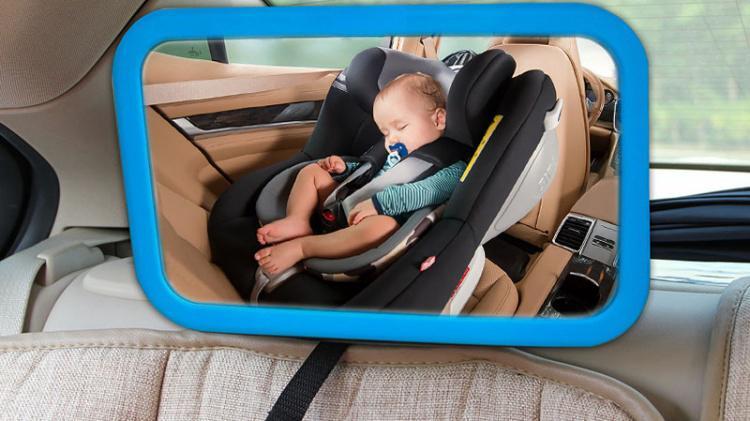
Additional features to look for
Beyond fundamental shapes and materials, several convenient features further enhance utility:
Adjustable joints
Movable joints like ball joints, swivel clips, rotating sockets, and multi-axis heads provide precise angle tweaking for targeting and optimizing visibility zones.
Lights
Some mirrors incorporate dimmable nighttime lights or alternate between settings for improved visibility in low-light driving conditions. This helps focus images blurred by darkness.
Straps & Clips
Straps with durable clips allow versatile attachment onto rear or front headrest posts for tailoring mounting placement locations to given vehicles.
Mirror tinting
Specialized tints like blue-light-reduction coatings provide glare minimization and sharpen visibility accuracy for discerning baby’s expressions without squinting or eye strain.
Factor in any additional functionality that could augment the effectiveness of the mirror and determine if value-added features justify potential extra expenditures compared with basic offerings.
Where to position your car seat mirror
Proper mirror orientation relative to sightlines and avoiding hazardous proximity to airbag zones deserve diligent consideration before installation.
Headliner mounting
Fixing the mirror overhead by attaching it to the car’s ceiling or headliner enables an aerial viewpoint looking down over the baby. This positioning crucially keeps the mirror completely out of the way of airbags. The tradeoff is tricky upward angling.
Rearview mirror mounting
Alternatively, mounting the mirror onto the stem of the rearview mirror facilitates convenient visibility through the front windshield. Ensure side positioning does not block the driver’s line of sight or impede airbag deployment.
Backseat mounting
Some mirrors feature adjustable clamps that firmly grip the top of any passenger headrest for backseat installation just behind the driver’s shoulder within the peripheral field of view.
Analyze the ergonomics of car seat positioning and mirror dimensions to deduce the optimal location for installation. Adjustability enables tweaking angles to refine visibility. Seek out professional guidance to verify a secure and non-obstructive setup.
Configuring the mirror only takes a few minutes. Here is a concise walkthrough:
Overhead Headliner Mounting
- Select a headliner spot with a clear rear view of the baby’s seat.
- Clean the area thoroughly then adhere to the foam installation pad.
- Remove the adhesive backing and press it onto the foam pad.
- Adjust angles horizontally and vertically.
- Confirm no contact/blockage of airbags.
Rearview Mirror Assembly
- Wipe the chosen spot on the frame with alcohol.
- Affix mounting clips or straps around the frame.
- Attach the mirror securely onto clips or straps.
- Tailor side-to-side and tilt angles for optimum view.
- Verify the mirror does not touch or obstruct airbags.
Backseat Headrest Attachment
- Identify the passenger headrest nearest yet behind the driver seat.
- Secure clamps around the top of the rear-facing headrest.
- Confirm tight non-slip grip will not detach or loosen.
- Angle mirror for optimal peripheral view range.
Carefully test adjustments and sightlines with the baby secured properly in the rear seat before setting out on the roads. Periodically confirm stable, vibration-free mounting during trips.
Troubleshooting common car mirror problems
In instances where car seat mirror performance falters or functions sub-optimally, implementing applicable solutions for the following frequent issues generally restores proper working order:
Problem: Mirror dislodges from mounts
Solution: Confirm all adhesive pads, straps, clips, or anchors are firmly attached without slipping or detachment over bumps.
Problem: Spotty images lacking clarity
Solution: Scrub the surface clean and replace the mirror if excessively scratched. Check for proper alignment relative to the sightline.
Problem: Limited scope of view
Solution: Carefully tweak horizontal, vertical, and rotational angles to expand visibility breadth. Or upgrade to a wide-angle mirror.
Problem: Excessive nighttime darkness
Solution: Enable built-in dimmable accent lighting features if available. Otherwise, consider replacing the mirror with a lighted model for enhanced low-light visibility.
Problem: Vibrations causing image distortion
Solution: Adjust the tension on mounting screws, straps, clips and adhesion pads. Add foam padding tape to dampen vibrations. Ensure glass lens mirrors have adequate foam edge protection.
Problem: Intermittent loss of mounting
Solution: Thoroughly clean contact surfaces and replace worn adhesive pads or aged suction cups that no longer seal effectively. Check for damage, cracks or missing components in mirror assembly hardware.
FAQs – Mirror guidelines and recommendations
What size mirror should I get?
Aim for around a 5” x 7” mirror. This provides adequate surface area for discerning the baby’s face without excessive bulkiness. Oval options also offer expanded verticality.
How do I eliminate glare or brightness issues?
Blue light-reduction coatings effectively cut down on glare. Also angle mirror just slightly upwards or downwards versus directly back to avoid straight-on brightness reflections.
Where should I avoid mounting the mirror?
Avoid placing mirrors on or immediately adjacent to airbags, sensors, cabin cameras or other critical vehicle systems to prevent any obstruction risks or detached projectile hazards.
What about attaching mirrors to the headrest?
Never attach mirrors directly onto the top bar of the baby’s rear-facing car seat, as these can directly strike and injure passengers in collisions. Overhead, rearview, or headrest-post attachments are safest.
Can I mount multiple mirrors for better visibility?
It’s generally not advisable to install more than one mirror. The additional hardware proliferation magnifies the potential for loose components detaching and multiplying blind spots. Larger singular mirrors should provide adequate visibility.
What specifications should I look for?
Seek shatterproof construction rated for extreme temperatures and crash forces. Mirrors should be securely fastened with non-slip foam padding and no hazardous protrusions. Ball joints enable 360° adjustment while straps and clips allow repositioning. Lighted modes improve visibility.
Let’s recap
Installing mirror visual access to baby makes driving less worrisome through enhanced monitoring and minimizing disruptive diversions. Evaluate material options, shapes, sizes, features and positioning thoroughly first.
Then follow installation best practices for steady adhesion and obstruction-free mounting compliant with automotive safety guidelines. Take advantage of adjustability for targeting the clearest sightline zone. Drive aware with the baby’s reflection visible!
Expanded guidance on optimal mirror placement
Determining the most strategic location to mount your car seat mirror merits thoughtful evaluation of the rear seat layout and sightline geometry variables in your vehicle model. While overhead and rearview options are most common and convenient, also consider lateral ridges, ceiling curvature, or carved headliner recesses that could provide anchor points unseen at first glance.
Analyzing the relative positioning of car seats, passing sight vectors, and the driver’s eye line perspective is key for deducing the ideal mount placement and adjustment angles. Consulting vehicle diagrams can reveal opportune previously overlooked mounting locations.
Consider test-fitting templates shaped like the mirror to judge alignment feasibility. Seek professional assistance for identifying custom solutions if struggling to formulate an unobstructed vantage point yourself.
While most windshield and ceiling installations should suffice, complex seat configurations or unique cabin contours may require some creative, out-of-the-box thinking to achieve a clear line of sight.
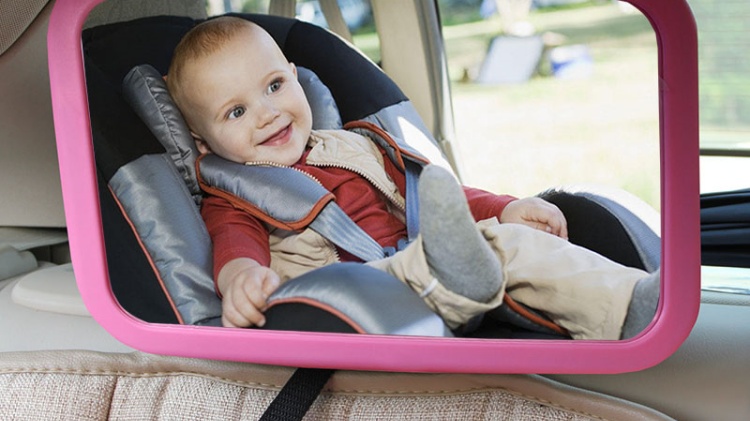
Special considerations for mirror usage during night driving
Operating mirrors when natural light dims necessitates tailored solutions to counteract visibility challenges from darkness and glare sources. Enabling supplemental lighting features when available proves extremely useful.
Models integrating dimmable LEDs that bathe the mirror’s field of view in soft uniform light eliminate dark shadows without risk of blinding brightness. Auto-dimming capabilities automatically adjust brightness responding to ambient conditions for optimal clarity.
Alternatively, opt for models offering a manual switch toggle between dedicated day and night settings. Blue light-reduction coatings filter the harshest glare and enhance the contrast. Rotating toward dome lights minimizes external light interference.
Note that clip-on spotlight attachments positioned very near LED-backlit touchscreens could enable better illumination than overheads alone depending on layout. Keep in mind that converting side mirrors to night mode narrows the field of view, so balance clarity is needed with safety considerations during speed adjustment.
While night driving presents tougher visibility issues, the right mirror equipped with sufficient lighting enhancements tailored to rear seating sightlines can still provide vitally reassuring connectedness with baby passengers.
Recommended mirror products for common car models
Certain vehicles’ spatial constraints, seating configurations, and roof contours pair more readily with specific mirror shapes and mounting locations. Refer to below when selecting mirrors guaranteed compatible with popular car makes and models based on best practice installation guidance:
Toyota RAV4 / Honda CR-V
- Rectangular overhead mount ideal for 2nd-row center seating sightlines
- Adjustable rearview clip-on mirrors are also recommended
Toyota Camry / Honda Accord
- Oval headliner mirrors for ample yet compact sightlines
- Lighted versions enhance restricted views
Toyota Sienna / Honda Odyssey
- Extra large rearview mirrors necessitate adjustable side-stem mounts
- Multiple interior lights aid third-row visibility
Tesla Model X / Model Y
- Custom wedge mirrors tailored for unique falcon wing door frame
- Integrated mirror lighting compensates for tinted glass
Ford F-150 / Chevy Silverado Crew Cab
- Long rectangular mirrors specially produced for full four-door rear cabin sightlines
- Robust mounting prevents vibration slippage
While general guidelines provide a starting point for mirror selection, comparing your exact backseat configuration to the above recommendations can further optimize compatibility. Consult manufacturer fit specifications if still uncertain an option will align adequately with rear seating sightlines.
Beyond physical installation, the way drivers utilize and interact with car seat mirrors impacts safety. Follow these best practice usage tips:
- Frequently Confirm Mounting Security: Give mirrors an extra shake test periodically to check for looseness over bumps
- Eliminate Potential Projectiles: Never hang extra mirrors, toys, or accessories from main mirror mounts
- Check Alignment Frequently: Reconfirm optimal positioning before each trip considering passengers and seat adjustments
- Keep Glances Brief: Just quick peeks less than two seconds reassure without hazardous distraction
- Adjust During Complete Stops: Only tweak mirror angles after fully pulled over and parked
- Report Damage Immediately: Don’t operate with any missing, warped or cracked mirror components
Adhering to manufacturer guidelines and proactively mitigating risks through cautious attention ultimately helps ensure your mirror provides the clearest, safest reflection of precious passengers possible during family travels.
So take advantage of this comprehensive guide’s advice when equipping your vehicle with mirror visibility to the back seat. Gaining that invaluable visual connectivity with babies, kids and passengers brings confidence and comfort behind the wheel!

